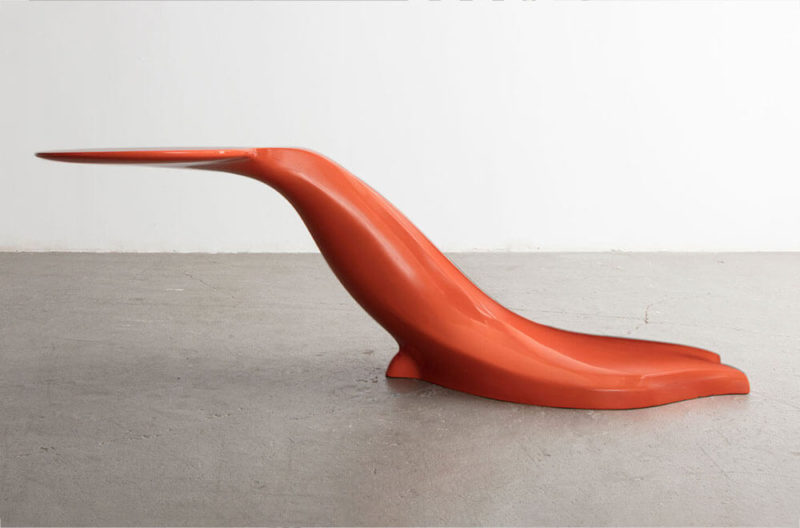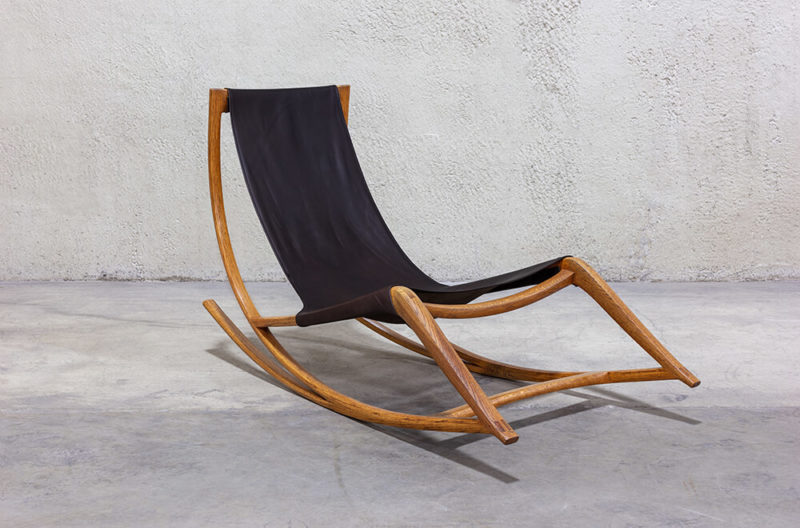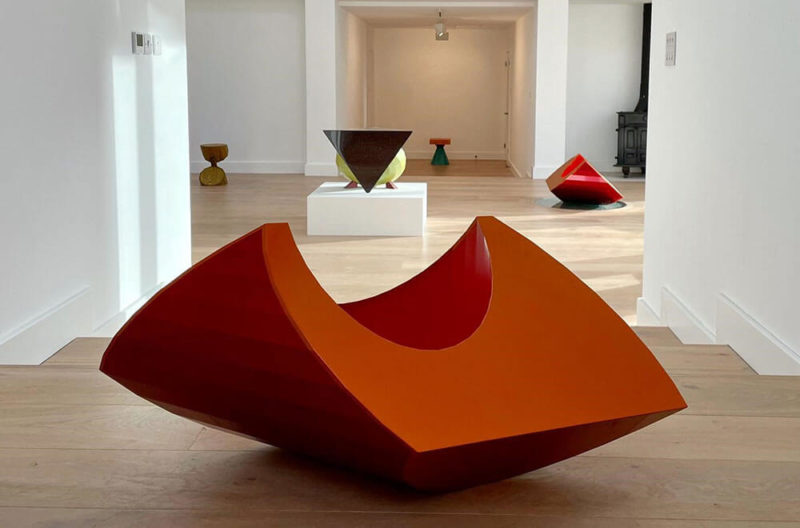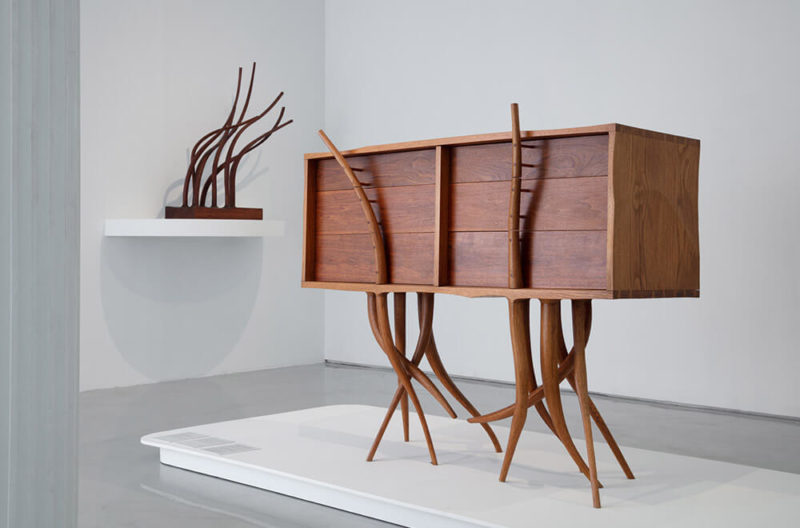Springborn Collection of Contemporary Craft / SALE PREVIEW
Chicago auction house Hindman presents a sale dedicated to the American Studio Craft Movement.

Sam Maloof, ‘Rocking Chair’, 1993
COURTESY: Hindman
PROPELLED BY LEGENDARY makers like Sam Maloof, Judy Kensley McKie and Wendell Castle, The American Studio Craft Movement of the late 20th century struck a favourable balance between the formal irreverence of late postmodernism and the technical mastery of age-old craft traditions. Not unlike others among their peers – who worked with the sensationalist mechanisms of iconographic pastiche, cultural parody and insider critique – these autonomous makers sought to challenge the conventions of mass production through experimental exploration. However, their implementation of a far more in-depth, self-expressive, material-driven and hands-on approach denoted a significant deviation. In a rare showing of symbiosis, artistic sensibility seems to fuse happily with function and practicality.

Toots Zynsky, ‘Untitled Vessel’, 1993
COURTESY: Hindman
And though the current output of what is now called ‘collectible design’ traces its origins back to both historical inclinations, it could be suggested that the tenets espoused by the Studio Craft Movement will have a deeper resonance with makers and collectors as we move into the future. Craft – a return to hand-making and closely controlled production – continues to permeate different segments of the art and design worlds. Whereas these attributes might be taken for granted in Europe as an integral part of its cultural fabric, they are only now being exhumed in the United States. Practitioners and purveyors are beginning to recognise the value and avail themselves of this American heritage.
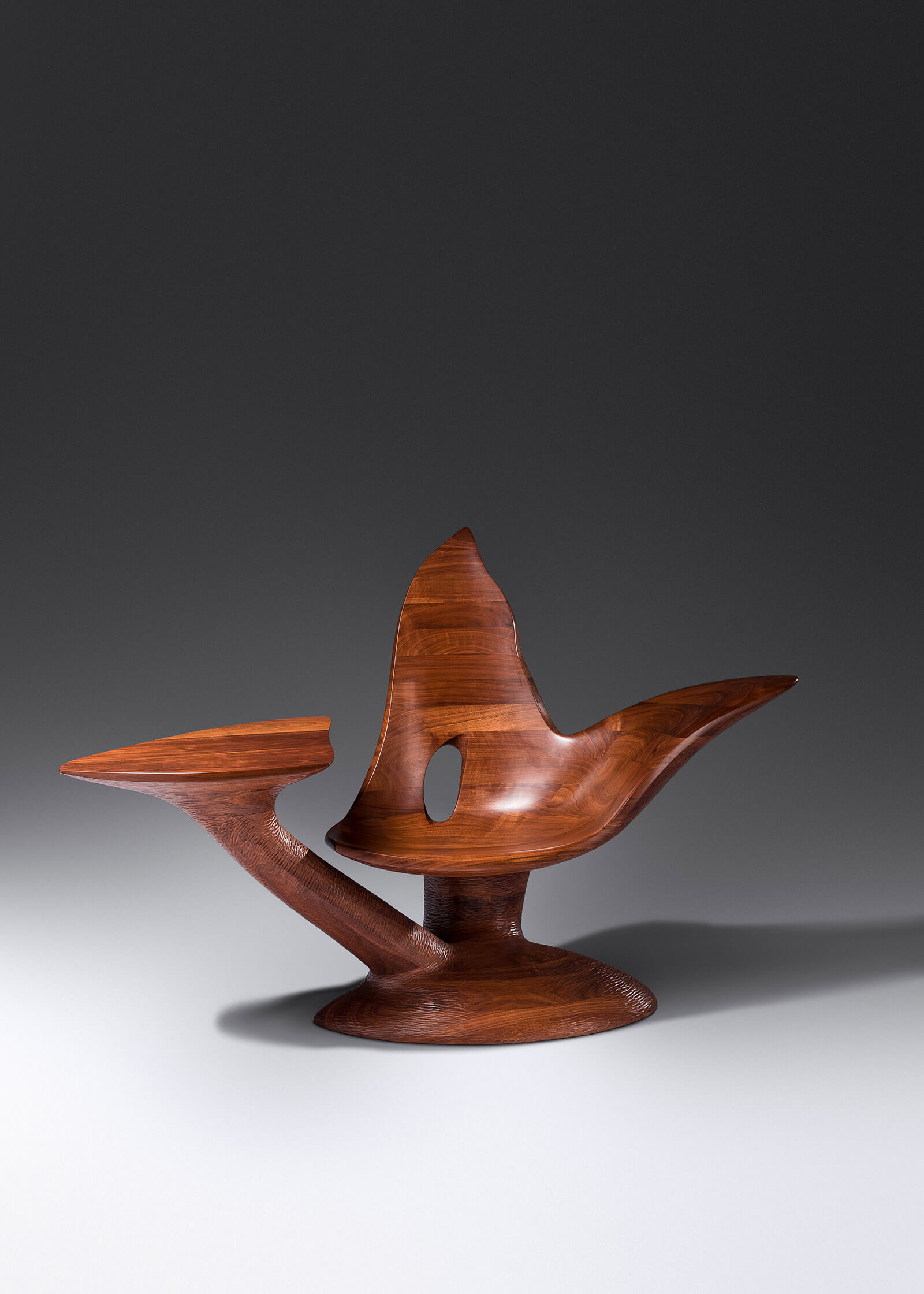
Wendell Castle, ‘Too Soon’ chair, 2005
COURTESY: Hindman
“[Contemporary galleries that emerged in the last 25 years] have emphasised the radical design context rather than that of studio craft,” noted scholar Glenn Adamson writes in the introduction to the Springborn Collection of Contemporary Craft auction catalogue. “Younger makers, likewise, tend to consider themselves either designers or artists first and furniture makers second. Yet in many ways, the propulsive energies that were set in motion by the midcentury generation – their emphasis on individual creativity, and the idea of furniture as an opportunity for self-expression – can still be felt in contemporary practice.”
Held by Chicago auction house Hindman on 23rd March, The Springborn Collection of Contemporary Craft auction will honour this impetus and, in turn, tap into a renewed interest in American Studio Craft furniture. The sale also pays homage to the recently deceased Carolyn and Robert Springborn. As of the late 1980s, this Illinois-based industrialist couple began collecting and commissioning an eclectic range of work from this group of designers, who rapidly became some of the movement’s foremost proponents. “They prized the relationships that they built with furniture makers,” Adamson adds. “One could fairly say that as their home filled with exuberant chairs, tables and cabinets, they felt surrounded by friends. They were lucky enough to be there when the studio furniture field crested to its height. And smart enough to catch the wave.”
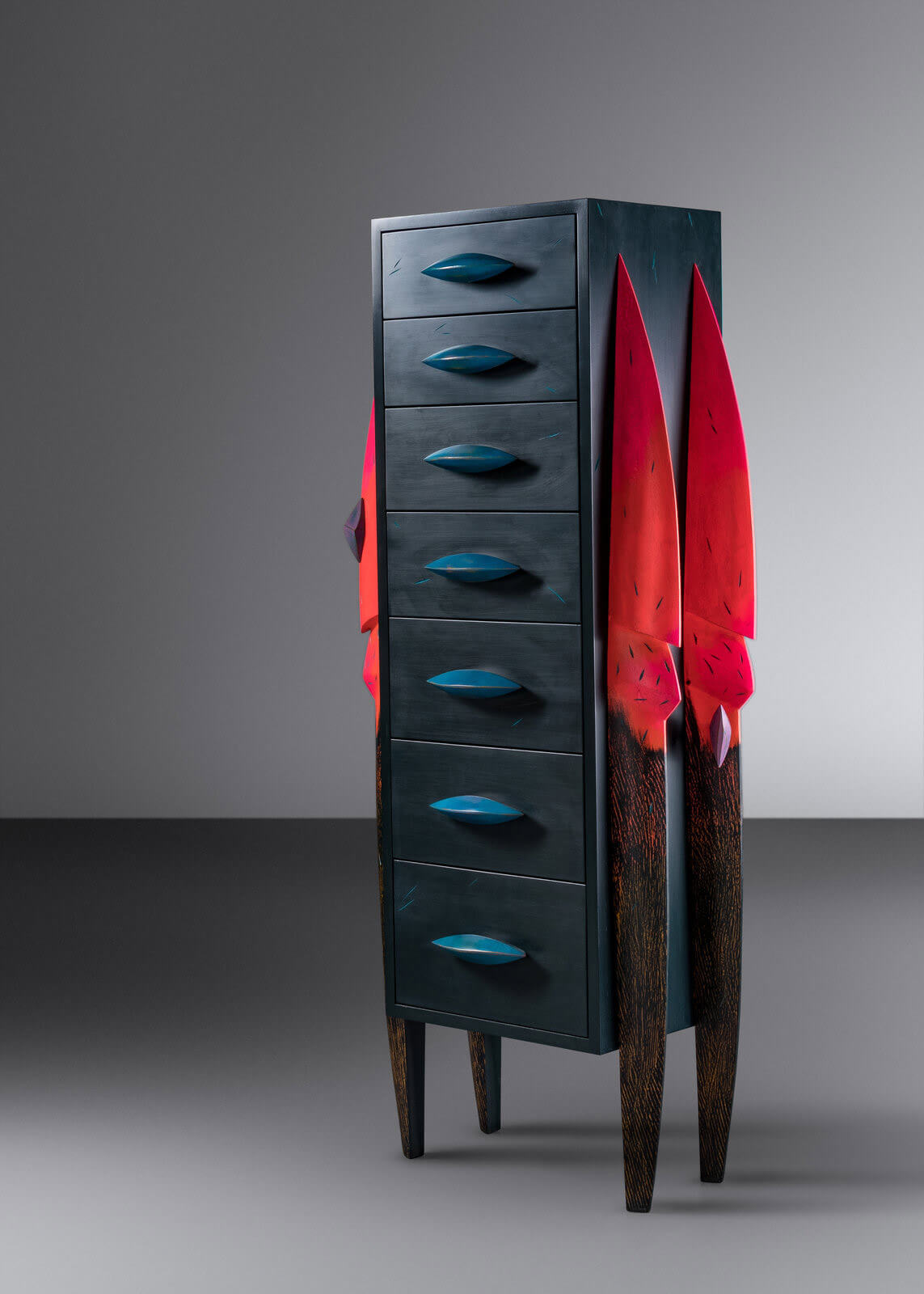
Wendy Maruyama, ‘Cowabunga II’, 1990
COURTESY: Hindman
A banker turned art dealer, Peter Joseph, opened a namesake Manhattan gallery in 1991, providing a crucial platform for American Studio Crafts and the movement’s true leader Wendell Castle. Through Joseph, the Springborns came into contact with his sculptural works, a cacophony of carved wooden shapes, meticulous finishes and, eventually, his digital milling innovations. Castle esteemed his patrons for their in-depth and ongoing devotion. His 1997 ‘Seven Days of the Week’ dining suite is the cornerstone of the sale. This particularly detailed and complex work, marking a pivotal point in his career, comprises an organic table with arthropod-like legs, also evoked in ten adjoining armchairs. “The legs stage a vivid contrast with the smooth asymmetrical top,” Adamson describes, “recalling midcentury biomorphic designs by Isamu Noguchi.”
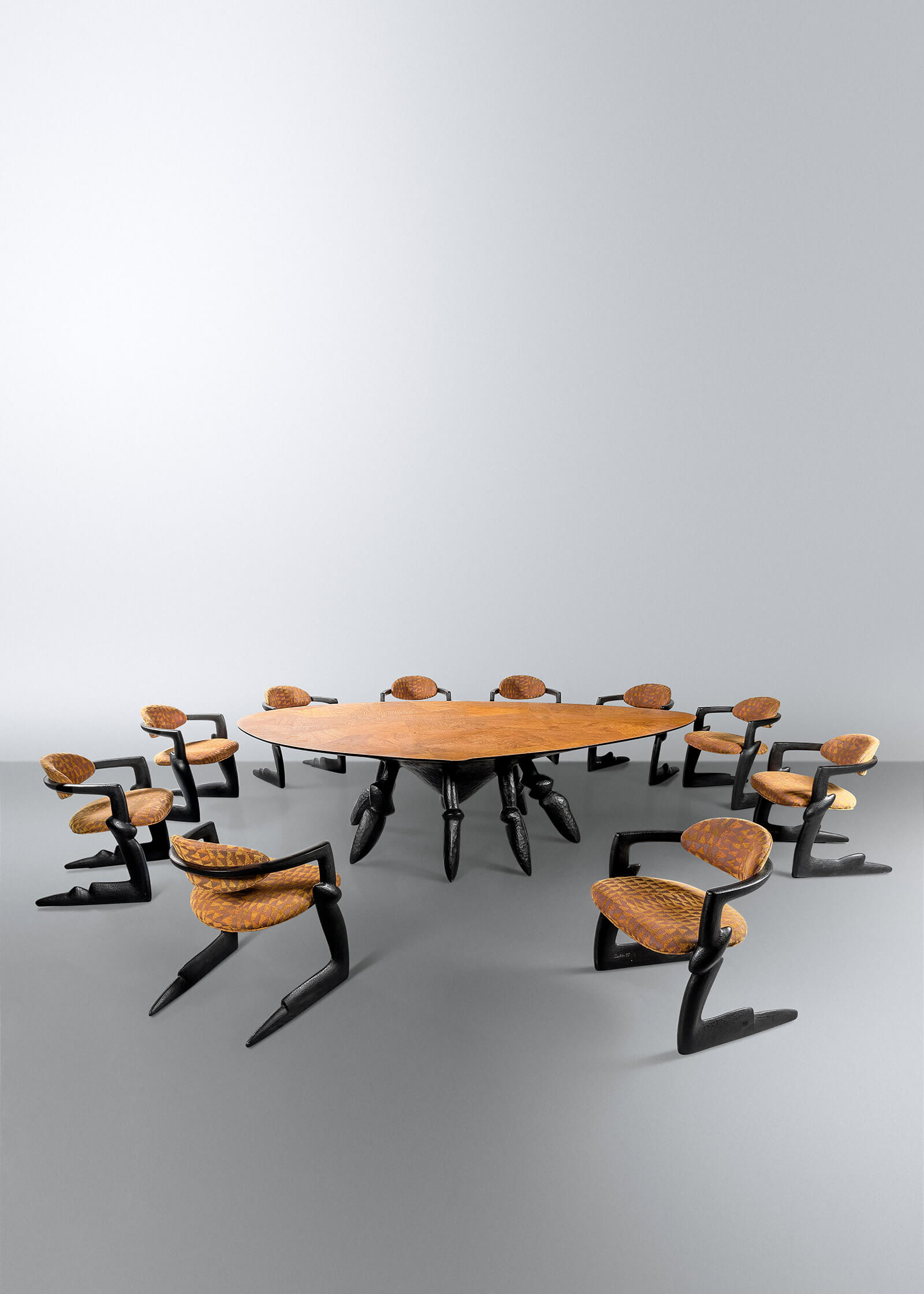
Wendell Castle, ‘Seven Days of the Week’ dining table and ten chairs, 1997
COURTESY: Hindman
Other key pieces from the fifty-lot auction include metalsmith sculptor Albert Paley’s ‘Important Entrance Doors’, initially commissioned by the Springborns in 2004 for their Naples, Florida home. Complete with delicate tendrils and components inspired by farm machinery, this decorative opening demonstrates the range of applications encompassed within the movement.
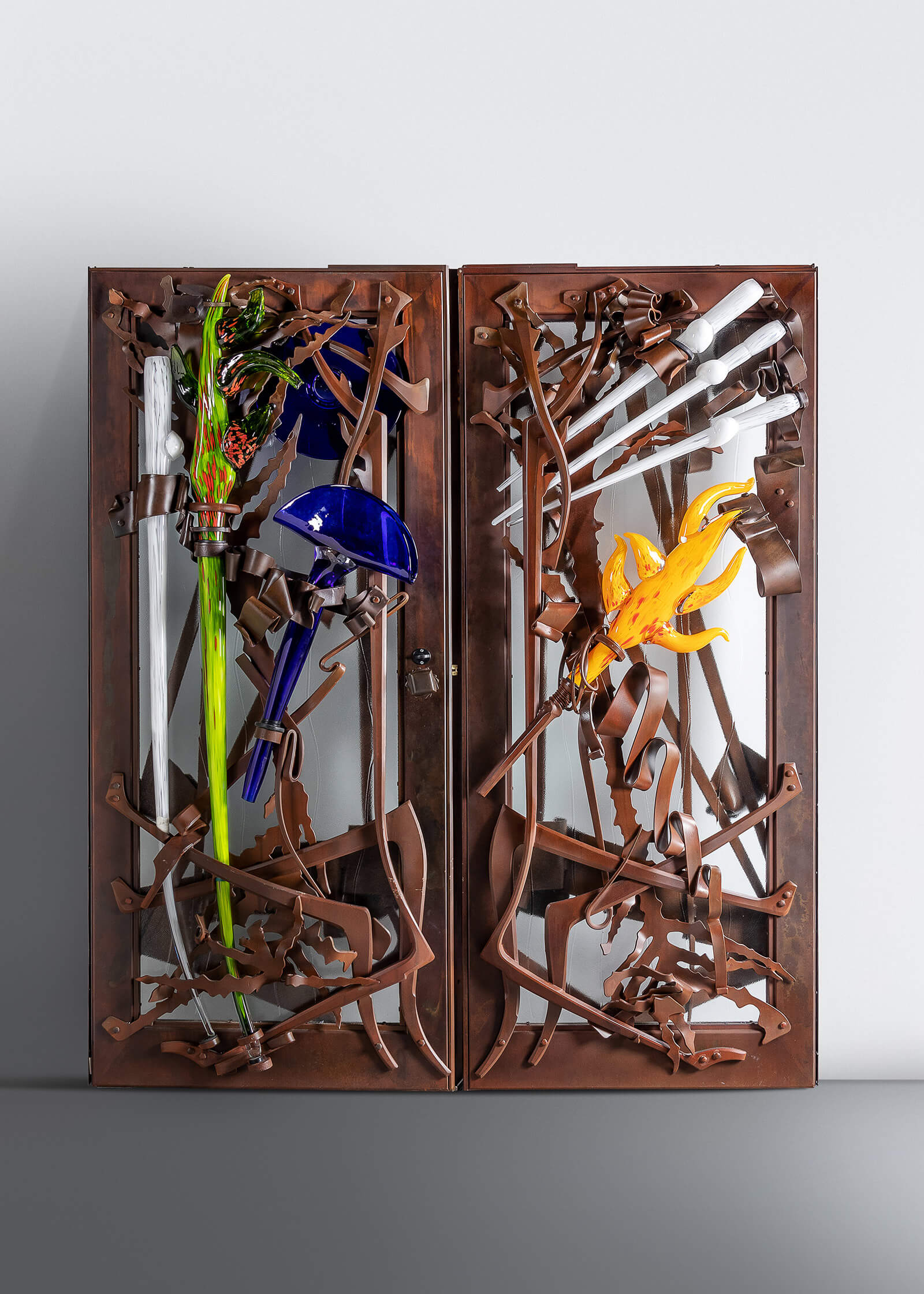
Albert Paley, ‘Important Entrance Doors’, 2004
COURTESY: Hindman
While graphically ironic works by Cederquist from the early 2000s teeter somewhere between pop-art and early postmodernism, Wendy Maruyama’s 1990 ‘Cowabunga II’ cabinet all-out evokes the genealogy that runs between the Arts and Craft Movement and the Memphis Group. What would typically be an unassuming rectilinear form is subverted using curvilinear lines, vibrant colours, and abstract appendages. Furnishings, vessels and sculptures by Toots Zynsky, Alphonse Mattia, Jay Stanger, Peter Dudley, Edward Zucca, Bennett Bean, Tommy Simpson, Thomas Hucker, Louis Mueller, and David Secrest are also on offer.
Bidding begins on 23rd March at 10:00 am Central Time. Bidders will be able to participate via absentee bid, by phone, or online through the Digital Bid Room, Hindman’s recently launched virtual and mobile bidding platform. Private in-person viewings are also available based on appointment.
The Springborn Collection of Contemporary Craft auction at Hindman, March 23rd, 10am CT




